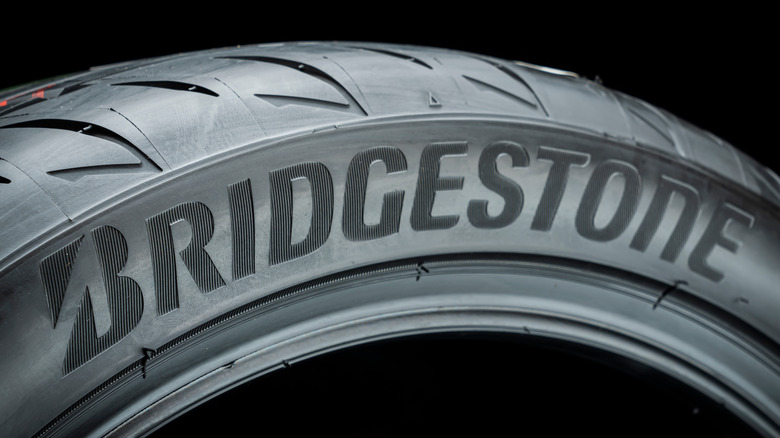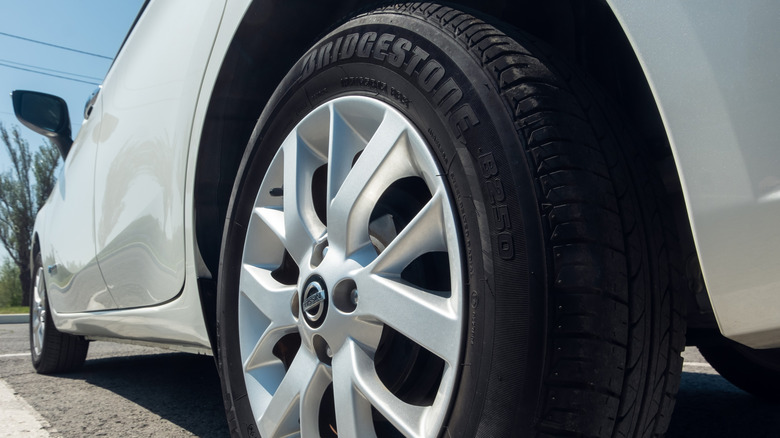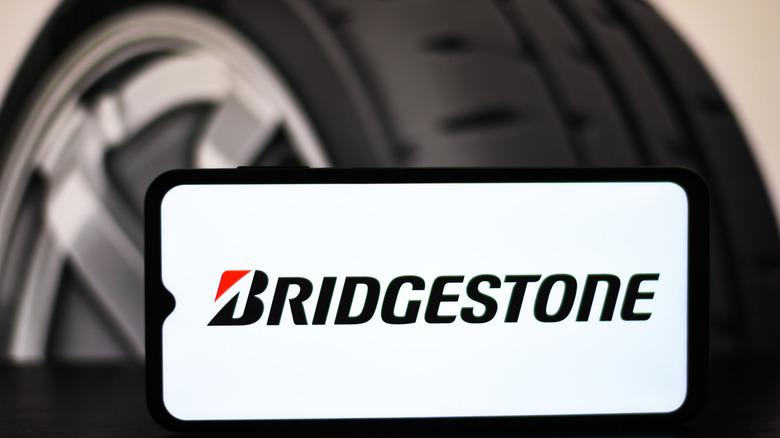Who Owns Bridgestone Tires And Where Are They Made?
Even if you've never driven a car in your life, you're more than likely familiar with Bridgestone. While there are plenty of solid alternatives to the red and black tire brand, few can match Bridgestone's leading place within the industry. The company's selection is well-renowned for its versatility and reliability, with options for every kind of vehicle and driving condition from all-season and SUV to performance and all-terrain. This reputation has helped it consistently rank high among the most successful tire brands on the market, even reigning as the largest tire manufacturer for 11 consecutive years, only being bested by Michelin in 2021.
As with practically any industry leader, Bridgestone's success didn't sprout overnight. The company's eye for innovation and performance got its start over 90 years prior when the first Bridgestone tires were manufactured in 1930. A lot about Bridgestone and the automotive industry as a whole has changed since that time, but the quality of the tires has remained as strong as ever. Nevertheless, learning more about the origins of the company and its products can help you gain a newfound appreciation for how Bridgestone's esteem came to be while also giving you a better idea of where your tires originated. With all of that out of the way, let's dive into the origins of Bridgestone's ownership and where its tires are produced.
Who owns Bridgestone tires?
While the Bridgestone Corporation has gone on to produce tires for motorcycles, commercial trucks, and even airplanes, as well as products for construction, agriculture, and sports, its reputation as a top-tier passenger tire manufacturer has been there since the beginning.
The Tire Division of Japan's Nihon Tabi Company was responsible for the precursor to Bridgestone tires until the company was rebranded as Bridgestone Tire Co., Ltd by Shojiro Ishibashi in 1931. It went on to continue manufacturing tires, enduring the lean years of World War II before establishing new production facilities throughout the country, breaking sales records, and implementing its first overseas plants throughout the 1950s and 1960s. In 1984, Bridgestone Tire Co., Ltd was renamed Bridgestone Corporation, and in 1988, it acquired the Firestone Tire and Rubber Company, giving the company access to numerous production facilities across North America.
In 1961, Bridgestone was listed on the stock market in Tokyo and Osaka, meaning others could take partial ownership of the company. As of this writing, Bridgestone has over 131,000 shareholders. The Master Trust Bank of Japan is currently its largest, with well over 105,000 numbers of shares held, with other organizations such as the Custody Bank of Japan, SMBC Nikko Securities Inc., the Nagasaka Corporation, and Nippon Life Insurance Company. Hiroshi Ishibashi, the grandson of Shojiro Ishibashi, despite having no executive role in the company, is currently Bridgestone's fourth-largest shareholder with 21,000 shares, while his museum, the Ishibashi Foundation, is the second-largest with 76,693 shares.
Where are Bridgestone tires made?
While the Bridgestone Corporation remains in operation in Chūō, Tokyo, Japan today, this is far from the only location where the company's world-renowned tires are produced. As one of the world's largest manufacturers of car tires, Bridgestone's manufacturing touch has spread across the globe.
In the United States alone, you'll find Bridgestone manufacturing factories and plants in areas such as Tennessee (where the first American Bridgestone manufacturing location was established in 1992), Texas, Georgia, North Carolina, and Illinois. Its reign across the Americas as a whole also includes Canada, Argentina, Costa Rica, and Brazil. And, of course, there are countless other international locations with countries such as Belgium, Spain, Turkey, South Africa, Thailand, India, China, and Australia to name a few. In total, Bridgestone has 130 manufacturing plants and facilities across the world.
So, how do you tell exactly where your Bridgestone tire was made? Take a look at the sidewall of your tire. Along with containing important information regarding your tires' load rating and age, they will also contain a two-letter plant code from the Department of Transportation (DOT) that indicates where your tire was manufactured, such as 1C or HY for Oklahoma City, Oklahoma, or 4D or 5D for Morrison, Tennessee.


